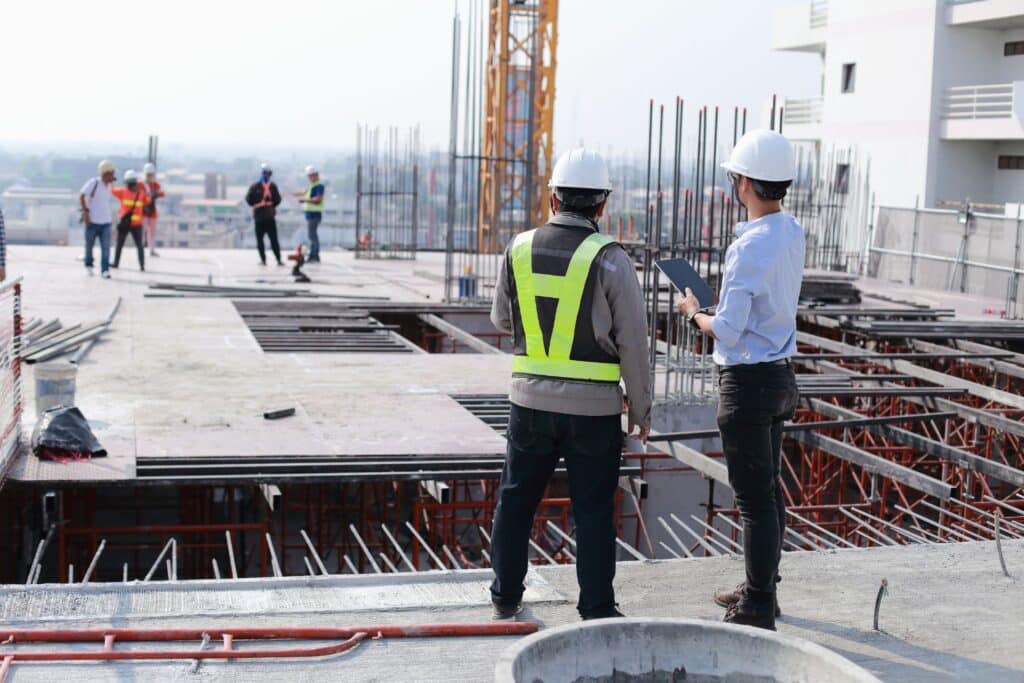Pauwels Blog
What is Lean IPD?
What is Lean IPD?
Lean IPD makes construction and infrastructure projects more efficient. With Lean IPD, all (main) parties sign 1 multiparty contract. Thanks to a risk/reward plan, all parties can potentially lose or double their profit. This encourages everyone to work together efficiently and deliver the project on time and within budget.
What is Lean IPD?
Most industries are becoming more productive. Except for the construction industry, where productivity has actually been declining in recent years. This shows a clear need for a new way of working to make construction projects more efficient. Enter Lean IPD.
Lean IPD stands for Lean Integrated Project Delivery. This way of working is based on 3 components:
- Aligned contract: The client, the design team and the builders of a (construction) project sign a single contract together. Within this contract, they can increase their profit margin when they cooperate efficiently, but also lose their profit when the construction project is delayed. In this way, all parties are encouraged to finish the project on time and within budget. Everyone wins, or everyone loses.
- Lean Construction: All parties work with streamlined processes and strive to continually improve these processes. The workflow should be as efficient as possible.
- Collaborative culture: It is crucial that all parties work together as effectively as possible and keep one goal in mind: the project.
So all parties work together to achieve the same goal. This efficiency generally improves project results and makes projects more cost-effective, as there are fewer delays or budget overruns.

Is Lean IPD useful for you?
Do you need Lean IPD for every project? No. Lean IPD is especially useful for projects:
- that will cost more than €750,000 due to their complexity,
- that involve multiple parties,
- that operate with multiple delivery schedules.
In short, Lean IPD is especially useful for large, complex projects.
Where is Lean IPD being used?
In the United States, Lean IPD has been well established for a decade, as most large construction projects (for example hospitals) there use Lean IPD by default. Meanwhile in Europe, Lean IPD is already well established in Great Britain and Poland. The rest of Europe is soon to follow.
An increasing number of large projects are also carried out in Belgium using the Lean IPD methodology. And when large companies start implementing it, smaller companies that are working on the same project have to follow. This way, the methodology becomes more and more widespread. A well-known example of a Belgian Lean IPD project is the Oosterweel Link.
However, there is still much room for improvement. In 2022, Lean IPD is still not the standard way of working in Europe. This is unfortunate, because it offers advantages for all parties involved directly and indirectly. For example, the faster an infrastructure project is completed, the sooner road detour and traffic jams are over and traffic can flow optimally again.
What are the benefits of Lean IPD?
Lean IPD ensures that the various parties are better aligned. This leads to more reliable projects that are completed faster and where all parties are better rewarded.
This allows construction partners to potentially make some extra profit. Additionally, the risk/reward plan gives them extra security as they will never lose money when the project doesn’t go according to plan.
End clients will see their project finalized faster, and probably with less costs.
What are the pitfalls of Lean IPD?
Of course, the benefits are there only when Lean IPD is done right. But things can also go wrong.
- Wrong partners: A project completely depends on the quality and reliability of the partners. A bad BVOA (Best Value Option Analysis) may throw a spanner in the works in this regard.
- No overview: As an owner, you need to map out in advance what your project would cost if you went for the traditional way of working. That way, you can better assess whether your Lean IPD partners are asking a correct price.
- Immediate cost: As the owner, you pay for design costs from day 1, long before the construction phase can begin. This has a positive effect on the group dynamic between the different construction partners, but a negative effect on your cash flow.

Tips & tricks
Are you interested in implementing Lean IPD? The following tips will help you get started:
- Start on time. It takes time to find the right partners and to draw up a good Lean IPD contract.
- Involve all parties in this new philosophy from the beginning and make sure everyone understands the benefits of Lean IPD.
- Change management and people skills are crucial in this process. After all, every decision affects a lot of parties. Everyone must feel comfortable with the decisions in order to continue to work well together.
- Consider hiring an outside party to manage the Lean IPD process. This person can look at different points of view objectively and unite them more easily compared to someone who is or appears biased.
Conclusion
Are you interested in Lean IPD and do you want to run your next project more efficiently? Contact us! We are happy to guide you through the entire process.
Contact Pauwels - Lean IPD EN
"(Required)" indicates required fields
Contact us
Do you have any questions for us? Let’s get in touch!
"(Required)" indicates required fields





